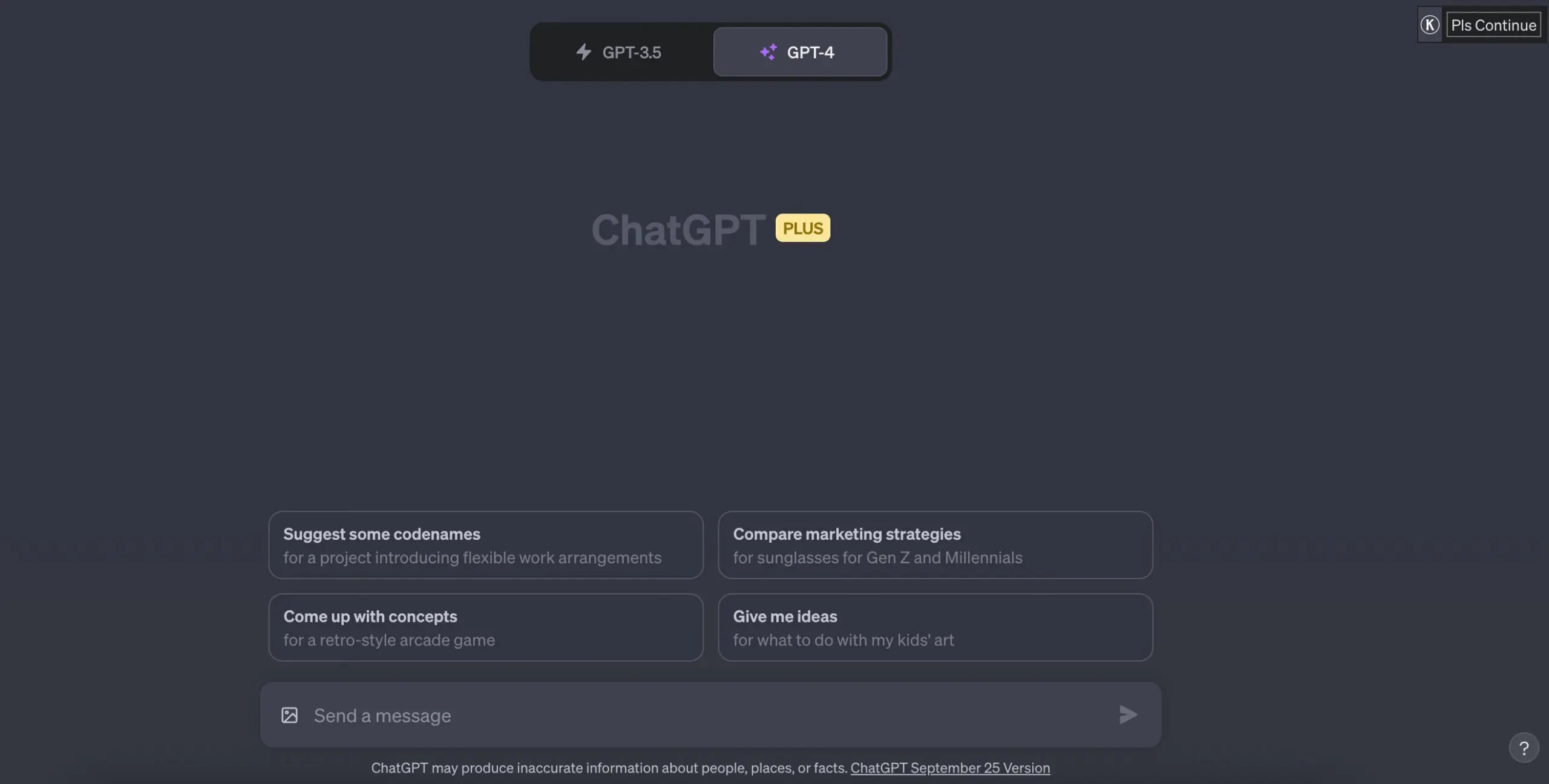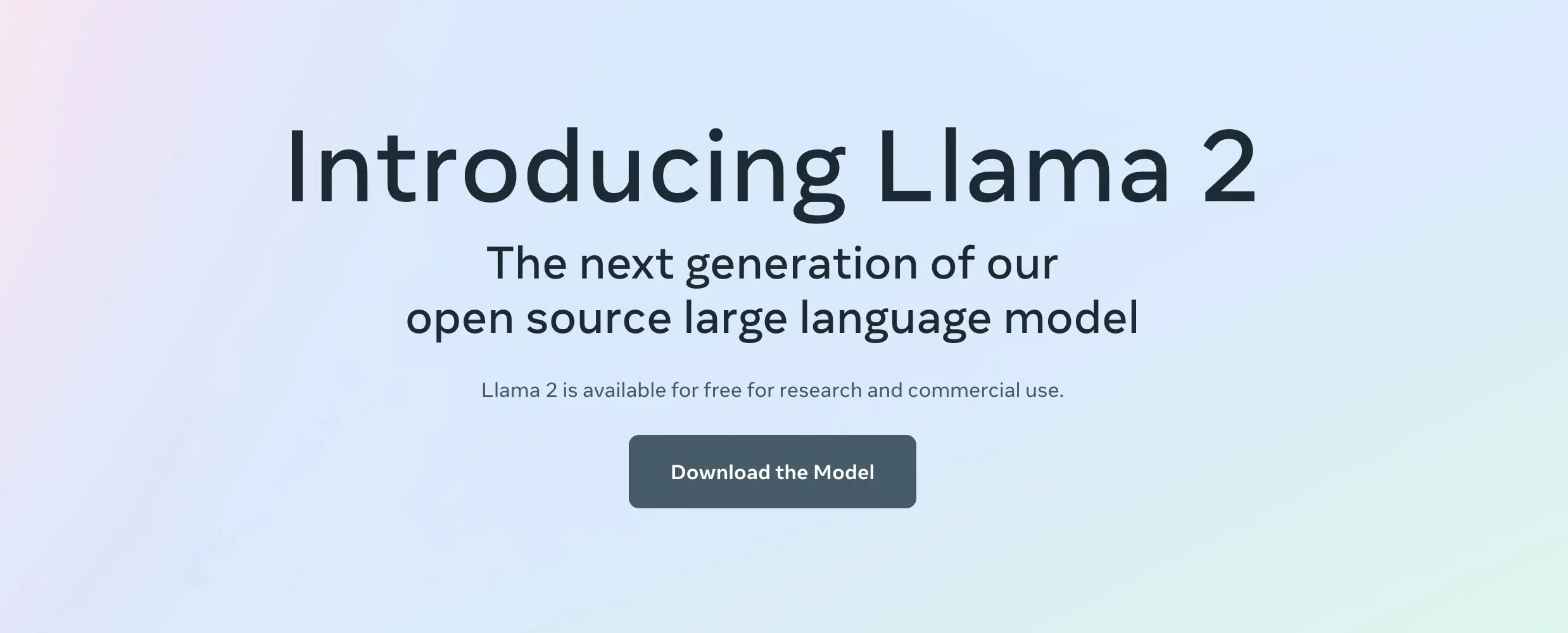LLaMa vs ChatGPT: Which Is Better?

[ad_1]
LLaMa vs ChatGPT. Both are excellent, groundbreaking AI tools in their own right. But which is the better tool for your digital marketing tasks?
As a digital marketer, utilizing the most effective tools in the field is essential, whether you’re creating compelling digital campaigns or providing customer support.
This article compares LLaMa vs ChatGPT, helping you decide which is best for your digital marketing needs. We’ll provide a breakdown of each tool’s pros and cons and look at their use cases.
Topics we’ll cover in this article include:
- LLaMa vs ChatGPT at a glance
- What is ChatGPT?
- What is LLaMa?
- LLaMa vs ChatGPT: Which is better?
- Final thoughts
1. LLaMa vs ChatGPT at a glance
Before we get into their uses for digital marketing, let’s take a moment to understand LLaMa (which stands for Large Language Model Meta AI) and ChatGPT in the broader context of emerging AI technologies.
Both LLaMa and ChatGPT belong to a broad category of recently developed artificial intelligence technologies known as large language models (LLMs).
In essence, LLMs are advanced AI systems that can understand and produce human-like text—what makes them particularly noteworthy is their ability to manage natural language processing (NLP) tasks. While LLMs have been around in theory since the 1960s, it’s only in recent years that we’ve had the computing power and technological prowess to produce models that can effectively manage complex NLP tasks. The capabilities of LLMs have clear implications for fields ranging from healthcare and e-commerce to digital marketing and beyond.
While LLMs like LLaMa and ChatGPT are powerful in their own right, they’ve become the talk of the tech world for a more fundamental reason. Namely, their remarkable versatility. Although both tools are excellent examples of technological engineering, they have captured wider public attention thanks to their broad range of applications.
In digital marketing, these chatbots shine for their ability to support everything from creating compelling campaign text to answering customer queries, assisting with brainstorming, supporting coding tasks, and even analyzing data.
For marketers, this latter use case is an especially useful feature of LLMs. Historically, marketing data analysis was the preserve of those with specialized skills. However, with the emergence of LLMs, marketing analytics is now far more accessible to those in the creative industries than it used to be.
All of this opens up exciting possibilities both for individuals seeking to supplement their existing digital marketing skillsets and businesses that want to streamline their strategies, processes, and decision-making. For digital marketing, LLMs like ChatGPT and LLaMa have the potential to provide a more engaging customer experience with a fraction of the effort.
But when it comes to Llama vs ChatGPT, which is the better option? While they are both based on LLM technology, it almost goes without saying that the two tools have some important differences. Let’s explore each in more detail.
2. What is ChatGPT?

ChatGPT is a leading chatbot developed by OpenAI, an AI research organization founded in 2015. The current freely accessible version of ChatGPT is driven by the large language model known as GPT 3.5. Unlike many models, ChatGPT has a massive 175 billion parameters. Meanwhile, rumor has it that GPT 4—the latest paid version—has a staggering 1.7 trillion parameters.
The term parameters here describes the rules or knowledge that the model has learned. The more parameters a model has, the smarter and more capable it should be. At least in theory!
As a result, ChatGPT can engage in sophisticated, natural-sounding conversation, generating text that mimics human language, understands context, and remembers past user inputs when producing new responses.
Since its launch in November 2022, ChatGPT has been widely adopted, thanks to its ability to summarize text, draft original content, assist with customer interactions, and support coding tasks, to name a few of its uses. People have even used it to generate unique (if slightly bizarre) crochet patterns, and its applications continue to expand!
ChatGPT’s versatility—and, frankly, the fact that it was the first chatbot of its type to be released to the public—positions it as one of the leading tools for businesses seeking to improve their digital marketing efforts.
Pros and cons of ChatGPT
Of course, we can sing the praises of ChatGPT until the cows come home, but it also pays to take a balanced view. With that in mind, here are some pros and cons of ChatGPT in the context of digital marketing:
Pros
- ChatGPT can generate draft content for various marketing materials, ranging from print brochures to social media updates.
- You can use ChatGPT to build website chatbots, providing quick and accurate responses to customer support queries.
- Many ChatGPT-integrated tools are emerging that can be customized (or “fine-tuned”) to fit specific brand needs, use cases, and tone of voice requirements. For example, personalized recommendation engines.
- It is accessible to use via your browser and also via the ChatGPT app. Technically, it can also be downloaded and run locally, although since it requires a large amount of computing power, this is impractical for most users.
Cons
- ChatGPT has a habit of “hallucinating”, meaning its output requires careful monitoring to avoid using or publishing inaccurate information.
- ChatGPT lacks the contextual understanding of human marketers, limiting its ability to generate unique and personalized content—this is especially true in the case of very niche products or services that are being sold or promoted to a specific market.
- Although seen as a powerful tool upon launch, in certain areas, some have noted a decline in the quality of ChatGPT’s output, such as errors in basic math problems.
- Since its launch, ChatGPT has been censored with an increasing number of guardrails. While this is necessary to tackle the issue of harmful output, it has also been shown that these guardrails can also reduce the quality of non-harmful output.
- Despite guardrails, ChatGPT sometimes generates politically biased or inappropriate responses for certain audiences—an issue that is more about intercultural understanding than demonstrably harmful outputs.
Now we have a good idea of what ChatGPT is and how it works, let’s take a closer look at its emerging competitor, LLaMa.
3. What is LLaMa?

LLaMa is a language model introduced by Meta (formerly Facebook) and made its debut in February 2023. Its second iteration, LLaMa 2, was unveiled in July of the same year, with new releases expected periodically.
The main difference between the LLaMa family of models and ChatGPT is that LLaMa’s primary purpose is not to be a chatbot. While it can certainly be used for this purpose, it is primarily available for users to download and customize for their specific use case. In this respect, LLaMa is actually analogous to the GPT family of large language models that underpin the ChatGPT chatbot.
Another difference from GPT is that LLaMa adopts a leaner approach in terms of parameters. It currently has three parameter sizes available: 7 billion, 13 billion, and 70 billion (compared to GPT 3.5’s 175 billion parameters).
While this means the output quality might not be as high as that of ChatGPT, it also translates to fewer computational resources. This means it is much more accessible to startups and smaller organizations who can download the LLaMa model for free and customize it locally.
Pros and cons of LlaMa
Here are some specific pros and cons of the LLaMa large language model:
Pros
- LLaMa is open source. It’s free for research and commercial use, making it more transparent than closed or “black-box” AI models (like ChatGPT).
- With fewer parameters, LLaMa is faster than many other models, including the GPT family of LLMs.
- LLaMa can be downloaded locally, customized, and fine-tuned for different tasks without consuming too many computational resources.
- It is optimized for dialogue use cases, making it ideal for training customer service chatbots or similar digital marketing tools.
- Since LLaMa 2 is trained using more up-to-date data than ChatGPT, it is better if you want to produce output relating to current events. It can also be fine-tuned using newer data.
Cons
- It’s open source… Hang on! Wasn’t this an advantage? Yes! However, some have argued that with technology this powerful, making code open source may be counterintuitive, leaving it vulnerable to bad players.
- LLaMa needs to be downloaded to your desktop—it is not accessible in your browser or as an app. This might be a disadvantage if you’re looking for a ready-to-go chatbot.
- Its abilities are limited in some areas—output might not be as creative as that from larger and better-trained LLMs like those powering ChatGPT.
- Out of the box, LLaMa can’t currently support math, coding, or logical reasoning tasks.
- Due to its smaller size, it might not always grasp the nuanced language or domain-specific jargon that’s common in many aspects of digital marketing (although since it is designed to be fine-tuned anyway, this might not always be a disadvantage).
- Fine-tuning it requires technical expertise.
4. LLaMa vs ChatGPT: Which is better?
LLaMa vs ChatGPT for digital marketing: which is better? Well, the answer isn’t one-size-fits-all. The better choice depends on your specific goals, requirements, and resources.
Here are some additional considerations that might help you make an informed decision:
- Use case: Consider the primary use cases for your digital marketing efforts. If you need a tool primarily for customer service chatbots and quick interactions, LLaMa might be more suitable as you can fine-tune it to your specific needs. On the other hand, if your needs are broader—such as content generation, creative writing, or support with coding—ChatGPT is probably your best bet.
- Resources: LLaMa can be privately hosted, and its smaller parameter options make it more accessible for startups and smaller organizations. ChatGPT is a lot slower, requiring substantial computational power.
- Ethical considerations: In general, AI ethics are a hot topic of debate right now. Some argue that ChatGPT’s “black box” approach is unethical and that open-source models like LLaMa are better. On the flip side, some feel that making such powerful software open-source makes it vulnerable to misuse. There’s no clear answer here, but both sides are worth considering.
- Support: Both LLaMa and ChatGPT have substantial support communities online, but with an active community of developers able to tinker with LLaMa, it can offer more support. This is ideal if you want to adapt it to a specific use case. For more general use, there is also a good support community for ChatGPT, but it typically focuses more on how to get the best from its prompt system.
- Cost: LLaMa is freely available, as is ChatGPT 3.5. However, for Chat GPT 4, you will have to pay a subscription fee. Nonetheless, while LLaMa is free, it’s also worth considering the cost of development or fine-tuning that might be needed to adapt it to specialized use cases.
The choice between LLaMa and ChatGPT is ultimately a matter of balancing the factors described here and considering your usage needs and technical prowess. The “best” model will ultimately be the one that aligns most closely with your specific digital marketing objectives and constraints.
5. Final thoughts
In this post, we’ve compared LLaMa vs ChatGPT. These two powerful technologies are making their mark in the world of digital marketing and beyond. Each has its own set of advantages and drawbacks, making them suitable for different scenarios.
When deciding on LLaMa vs ChatGPT, be sure to consider factors such as your specific use case, available resources, and budget. Ultimately, the decision will hinge on how well your chosen model aligns with your specific objectives.
Don’t forget, though: AI is evolving rapidly. As new models and improvements emerge, the model best suited to your needs might change. Be sure to stay up-to-date with the latest developments and factor in regular reevaluations as new advancements are released to different tools and LLMs.
Ready to start your digital marketing journey? Try out this free, 5-day short course or speak directly with a program advisor.
If you liked this article, then try these, too:
[ad_2]
Source link
